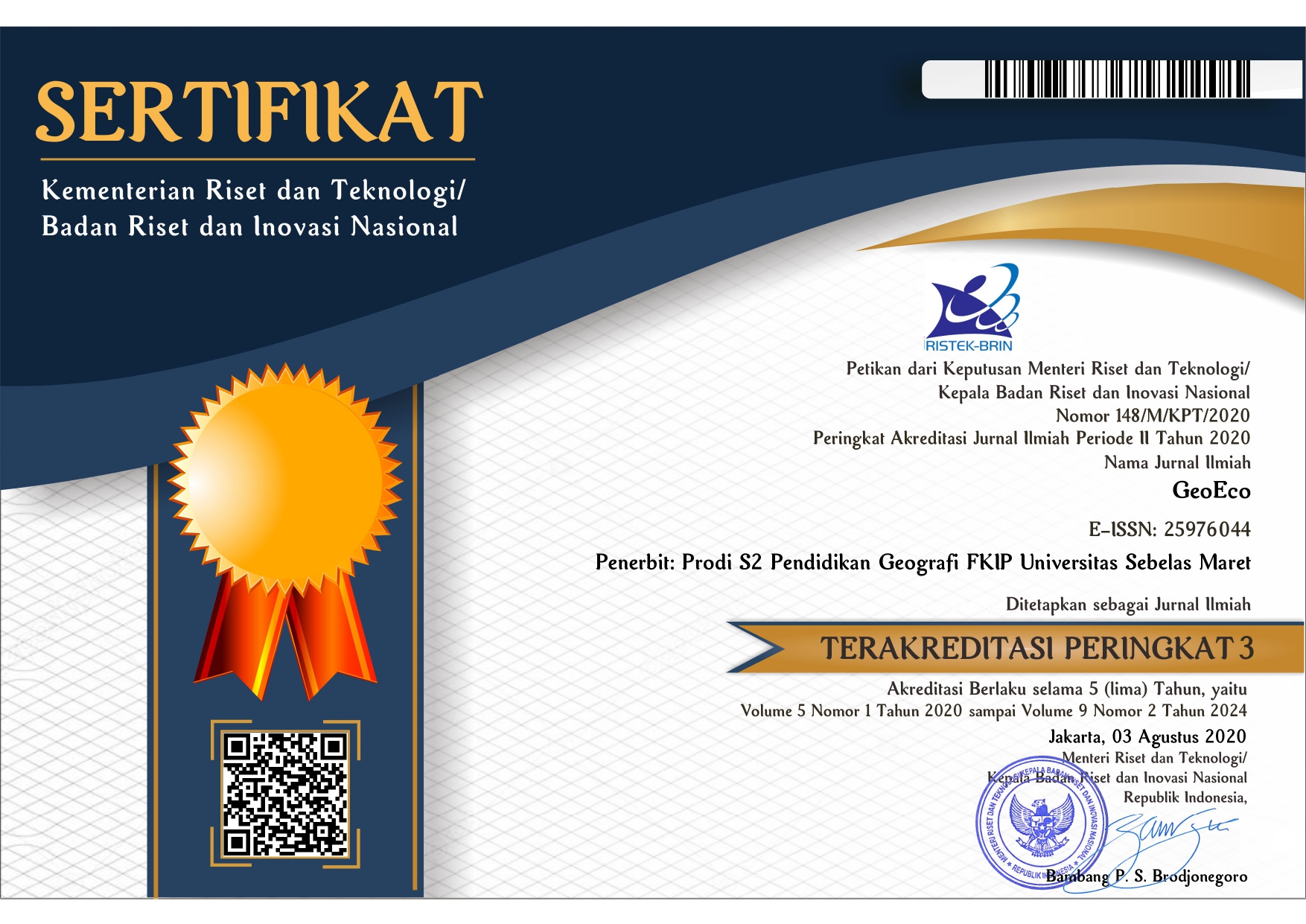IMPLEMENTATION OF CHILDREN FRIENDLY SCHOOL TO REALIZE JAVANESE CULTURAL CHARACTER BASED SOCIAL ENVIRONMENT
Abstract
Keywords
Full Text:
PDFReferences
A, P. R., D, S. M., J, R. M., & K, R. A. (2016). A SPATIAL ANALYSIS FOR ASSESSING THE SUITABILITY OF ELEMENTARY SCHOOL AS SOCIAL INFRASTRUCTURE AT THE NEIGHBOURHOOD UNIT SCALE IN SUPPORTING CHILD-FRIENDLY SURAKARTA. Journal of Geomatics and Planning, 3(1), 33–52. https://doi.org/10.14710/geoplanning.3.1.33-52
Assembly, G. R. (1989). Convention on the Rights of the Child. Retrieved from https://www.unicef.org/sites/default/files/2019-04/UN-Convention-Rights-Child-text.pdf
Hermino, A., & Luangsithideth, V. (2017). Community Awarenes and Child-Friendly School at the District Nonghet , Northern of Lao PDR. Asian Social Science, 13(11), 109–116. https://doi.org/10.5539/ass.v13n11p109
Leino, M. (2011). THE CHILD FRIENDLY SCHOOL : AN IDEA VERSUS REALITY. Problems of Education in the 21st Century, 29, 82–88. Retrieved from http://journals.indexcopernicus.com/abstract.php?icid=942641
Rini, E. F., Putri, R. A., & Sinta, D. (2019). MATEC Web of Conferences 280. In Factors influencing the modal choice to access elementary school in supporting Surakarta as child friendly-city (Vol. 3022, pp. 1–8). EDP Sciences. https://doi.org/https://doi.org/10.1051/matecconf /201928003022
Silao-navarra, E. M. A. E. (2019). The Goals of a Child-Friendly School and the Psycho-Social Environment of the Learners in Public Secondary Schools in the Division of Butuan City , Philippines. SMCC Teacher Education Journal, 1(June), 163–178.
So, K., & Shin, S. (2012). The Design and Development of a Child-Friendly Pedestrian Environment in School Zones. Advanced Materials Research, 598(598), 156–163. https://doi.org/10.4028/www.scientific.net/AMR.598.156
Thomas, S., Jose, K. A., & Kumar, P. A. (2018). Child Friendly Schools : Challenges and Issues in Creating a Positive and Protective School Environment. In S. Deb (Ed.), Positive Schooling and Child Development (pp. 233–248). SIngapore: Springer Singapore. https://doi.org/10.1007/978-981-13-0077-6
Refbacks
- There are currently no refbacks.












.png)

